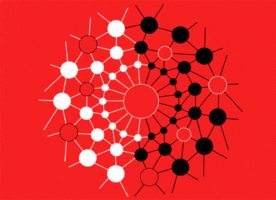A group of more than 150 research-based leaders in learning and technology participated in Cyberlearning 2015, a meeting sponsored by the National Science Foundation (NSF). For two days in Arlington, Virginia, attendees collaborated to chart future directions for cyberlearning, a field that examines how new advances in the sciences of learning can integrate with new technologies to broadly and deeply advance opportunities for learning.
Here’s a quick tour of the opportunities and challenges featured at the meeting.
Two prominent leaders from NSF, Dr. Joan Ferrini-Mundy (Education and Human Resources) and Dr. James Kurose (Computer and Information Science and Engineering), challenged the investigators to seek opportunities to combine learning sciences and technology in ways that could shift the landscape of learning, helping to achieve NSF’s vision of a nation that capitalizes on new concepts in science and engineering and provides global leadership in research and education. Likewise, Kumar Garg of the White House Office of Science and Technology Policy charged the group to think not only about pushing innovation into education, but also to think from a “pull” perspective about how to focus on solving major outstanding challenges.

Four keynotes (archived for viewing online) framed discussions of future landscapes for learning.
Theo Watson of Design I/O showed how museums could be transformed into spaces for playful intergenerational learning about big scientific concepts, such as “systems thinking,” which is important in addressing issues of sustainability. He shared his designs for interactive installations in which children, parents, and grandparents interact with fantastical ecologies, brought to life in an immersive, artistic experience. In these installations, computer vision recognizes gestures to allow a child’s playful movement to lead them into exploration of a scientific phenomenon and into learning about the scientific concept with friends or family.
Social and collaborative engagement also featured prominently in the work of Dr. Justine Cassell from Carnegie Mellon University. Her research revealed how strongly learning depends on the rapport between children who are working together and the small details of social interaction and cultural context. She demonstrated a “rapport-based peer tutor”—a computer-generated imaginary learning companion, which could detect students’ social behavior and interact with the student as an idealized peer to support learning. Dr. Cassell’s work exemplifies the intertwining of the science of learning and advanced technologies characteristic of cyberlearning projects.
Dr. Louis Gomez of UCLA charged the audience to see their work not only as invention, but as organizing on-the-ground changes. “Ideas are like buses,” he suggested. “Wait a minute and another one will come by.” Dr. Gomez therefore urged investigators to focus on improvement science, a discipline that emphasizes continuous improvement with special attention to the persistent inequalities that give some youth fewer opportunities to learn than more privileged youth. The difference, Dr. Gomez argued, comes from finding ways to give participants more voice as new learning approaches are designed and by paying close attention to variations in opportunities to learn and in outcomes. Dr. Gomez inspired attendees to conceptualize how their work could address long-standing societal barriers through prolonged, disciplined engagement in making change happen.
Building on this societal focus, Dr. Cristóbal Cobo of Plan Ceibal in Uruguay described how the small South American democracy has given every student a laptop and established wireless networking in schools, homes, and public spaces. Uruguay now seeks to use this new technological landscape to foster its vision of social inclusion. For example, through remote tutoring, both rural and urban students can learn from live English tutors, thus opportunity to learn to speak English is no longer limited by geography. More importantly, Dr. Cobo showed how Uruguay’s new learning landscape changes the questions investigators can ask and answer about learning. For example, investigators can now dig into big data on student learning, examine how advanced networking can advance teaching practice, or explore how learning happens when connected seamlessly across homes, schools, and communities.
Among these major addresses, the invited attendees shared their own recent advances through 4-minute PechaKucha talks (also available for viewing online) and participated in expertise exchanges to learn the multidisciplinary skills needed in cyberlearning research. Many PechaKuchas highlighted the intertwining of new research on how people learn with design of new approaches to learning. New designs went well beyond tablets or web browsers to use sensors, voice interaction, embodied interaction, realistic simulations of human mentors, robotics, maker spaces, and more. In expertise exchanges, one hot topic was data privacy and another was how to measure advanced learning. (Other examples of cyberlearning advances can be seen in videos from prior Cyberlearning Summits; links are provided below).
Attendees participated in two kinds of collaborative work sessions. A first set of sessions examined how to increase the impact of cyberlearning projects. Investigators explored increasing impact by better communication to the public, engagement of teachers, partnerships with the private sector, and bridging divides in the research community. A second set of sessions envisioned how a next generation of cyberlearning efforts could conduct the most needed additional layers of work. These looked, for example, at
- Crossing boundaries between in-school and out-of-school learning
- Leveraging innovative maker activities more broadly
- Building a cyberlearning teacher community
- Synthesizing core advances in helping people to learn
- And other opportunities for cyberlearning to make progress in creating a learning landscape that would enable every student to be an active, engaged participant in the learning they will most need for the future.
NSF supported Cyberlearning 2015 through a cooperative agreement that established the Center for Innovative Research in Cyberlearning (CIRCL). SRI International, Education Development Center, Inc., and NORC are partners in leading CIRCL. The website prominently features the perspectives and projects of the community active in cyberlearning design and research.
Watch videos from prior Cyberlearning Summits:
This material is based upon work supported by the National Science Foundation under Grant Nos. IIS-1233722 and IIS-1441631. Any opinions, findings, and conclusions or recommendations expressed in this material are those of the author(s) and do not necessarily reflect the views of the National Science Foundation.


